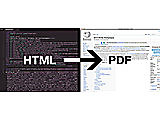 Intel® Embree is a collection of high-performance ray tracing kernels, developed at Intel. The target users of Intel® Embree are graphics application engineers who want to improve the performance of their photo-realistic rendering application by leveraging Embree's performance-optimized ray tracing kernels. The kernels are optimized for the latest Intel® processors with support for SSE, AVX, AVX2, and AVX-512 instructions. Intel® Embree supports runtime code selection to choose the traversal and
Intel® Embree is a collection of high-performance ray tracing kernels, developed at Intel. The target users of Intel® Embree are graphics application engineers who want to improve the performance of their photo-realistic rendering application by leveraging Embree's performance-optimized ray tracing kernels. The kernels are optimized for the latest Intel® processors with support for SSE, AVX, AVX2, and AVX-512 instructions. Intel® Embree supports runtime code selection to choose the traversal and
 MoonRay is DreamWorks’ open-source, award-winning, state-of-the-art production MCRT renderer, which has been used on the following feature films: How to Train Your Dragon: The Hidden World Abominable The Croods: A New Age Trolls World Tour The Boss Baby: Family Business The Bad Guys Puss In Boots: The Last Wish MoonRay was developed at DreamWorks and is in continuous active development and includes an extensive library of production-tested, physically based materials
MoonRay is DreamWorks’ open-source, award-winning, state-of-the-art production MCRT renderer, which has been used on the following feature films: How to Train Your Dragon: The Hidden World Abominable The Croods: A New Age Trolls World Tour The Boss Baby: Family Business The Bad Guys Puss In Boots: The Last Wish MoonRay was developed at DreamWorks and is in continuous active development and includes an extensive library of production-tested, physically based materials
 Intel OSPRay is an open source, scalable, and portable ray tracing engine for high-performance, high-fidelity visualization on Intel Architecture CPUs. OSPRay is part of the Intel oneAPI Rendering Toolkit and is released under the permissive Apache 2.0 license. The purpose of OSPRay is to provide an open, powerful, and easy-to-use rendering library that allows one to easily build applications that use ray tracing based rendering for interactive applications (including both surface- and volume-b
Intel OSPRay is an open source, scalable, and portable ray tracing engine for high-performance, high-fidelity visualization on Intel Architecture CPUs. OSPRay is part of the Intel oneAPI Rendering Toolkit and is released under the permissive Apache 2.0 license. The purpose of OSPRay is to provide an open, powerful, and easy-to-use rendering library that allows one to easily build applications that use ray tracing based rendering for interactive applications (including both surface- and volume-b
 YafaRay is a free open-source physically based montecarlo raytracing engine released under the LGPL 2.1 license. Raytracing is a rendering technique for generating realistic images by tracing the path of light through a 3D scene. A render engine consists of a specialised computer program that interacts with a host 3D application to provide specific raytracing capabilities "on demand". The YafaRay engine can be used in the following 3D applications: Blender, Edificius, pCon-planner and Wings 3D.
YafaRay is a free open-source physically based montecarlo raytracing engine released under the LGPL 2.1 license. Raytracing is a rendering technique for generating realistic images by tracing the path of light through a 3D scene. A render engine consists of a specialised computer program that interacts with a host 3D application to provide specific raytracing capabilities "on demand". The YafaRay engine can be used in the following 3D applications: Blender, Edificius, pCon-planner and Wings 3D.
 wkhtmltoimage and wkhtmltopdf render HTML pages into PDF or convert them into image files respectively. They're utilizing the QT Webkit runtime for "headless" operation without a running browser or display server.
wkhtmltoimage and wkhtmltopdf render HTML pages into PDF or convert them into image files respectively. They're utilizing the QT Webkit runtime for "headless" operation without a running browser or display server.
|